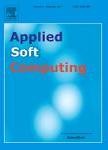版权所有:内蒙古大学图书馆 技术提供:维普资讯• 智图
内蒙古自治区呼和浩特市赛罕区大学西街235号 邮编: 010021

作者机构:Univ Sci & Technol China Sch Comp Sci & Technol Jinzhai Rd 23006 Hefei Anhui Peoples R China Manchester Metropolitan Univ Dept Comp & Math Manchester M15 6BH England Chitkara Univ Chitkara Univ Inst Engn & Technol Ctr Res Impact & Outcome Rajpura 140401 Punjab India
出 版 物:《APPLIED SOFT COMPUTING》 (Appl. Soft Comput.)
年 卷 期:2025年第170卷
核心收录:
学科分类:08[工学] 0812[工学-计算机科学与技术(可授工学、理学学位)]
基 金:Chinese Academy of Sciences (CAS) World Academy of Sciences (TWAS) by The CAS-TWAS President's Fellowship
主 题:Self-supervised learning Graph representation learning Graph contrastive learning Negative sample selection Deep learning
摘 要:Graph contrastive learning (GCL) aims to contrast positive-negative counterparts to learn the node embeddings, whereas graph data augmentation methods are employed to generate these positive-negative samples. The quantity, quality, and variety of negative samples relative to positive samples play crucial roles in learning meaningful embeddings for node classification downstream tasks. Excessive quantity, low-quality, and less variation of negative samples cause the model to be overfitted for particular nodes, resulting in less robust models. To solve the overfitting problem in the GCL paradigm, this study proposes a novel Cumulative Sample Selection (CSS) algorithm by comprehensively considering the quantity, quality, and variety of negative samples. Initially, three negative sample pools are constructed: easy, medium, and hard negative samples, which contain 25%, 50%, and 25% of the total available negative samples, respectively. Later, 10% negative samples are selected from each of these three sample pools for training the model. After that, a decision agent module evaluates the model training results and decides whether to explore more negative samples from the three negative sample pools by increasing the ratio or to continue exploiting the current sampling ratio. The proposed algorithm is integrated into a proposed graph contrastive learning framework named NegAmplify (Negative samples Amplifi cation). NegAmplify is compared to the state-of-the-art methods on nine node classification datasets, with seven achieving better node classification accuracy with up to 2.86% improvement. The implementation of NegAmplify is available at https://***//mhadnanali/NegAmplify.